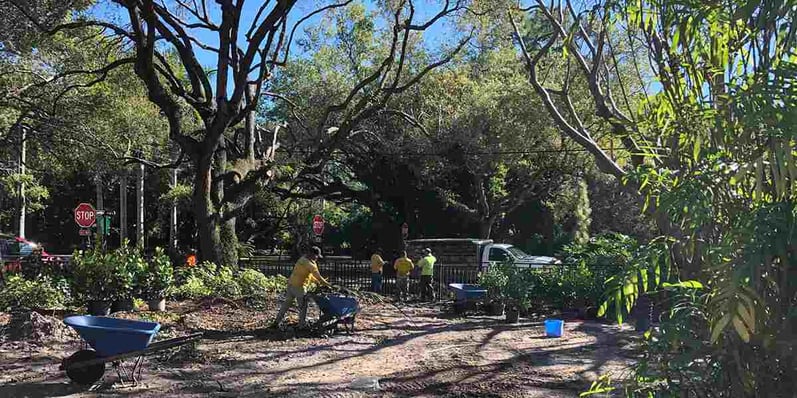Pollarding refers to a pruning technique designed to limit the size of trees and shrubs. Pollarded trees typically feature knobby limbs with no leaves or twigs. By cutting back new growth, pollarding stimulates regrowth that brings the tree back to its full size, showcasing some of the benefits of pruning in maintaining tree health and appearance.
Is pollarding bad for trees? As a top-rated tree trimming service in Coral Gables, the experienced crew at Nature’s Dream Landscape & Tree Service explores pollarding, as well as its benefits and drawbacks.

The History of Pollarding
Ancient Romans pollarded trees as early as 2,000 years ago to provide food for livestock and fuel for winter fires. They also used the straight boards as raw materials for fencing and building boats. Today, people pollard trees to maintain a certain height for various purposes.
Reasons for Pollarding
Despite its presumption as a bad habit, pollarding offers several benefits:
- Potentially improves the health of trees
- Reduces the risk of falling branches, especially for extremely tall and hazardous trees
- May help with transplantation, allowing trees to bear fruit
- Provides sufficient materials for building boats and fencing materials
- Smaller branches also provide raw material for basket weaving
- Provides wood, a great source of fuel
- May yield plenty of flowers and eventually fruits
- Fallen leaves provide fodder for feeding livestock
Ultimately, tree owners pollard them for practical and aesthetic reasons. Unlike cutting down a tree for wood, pollarding promotes tree health and minimizes the environmental impact of urban forestry.
While you can pollard young trees yourself, pollarding large trees requires specialized equipment that only professionals would have.
Disadvantages of Pollarding
Is pollarding bad for trees? While many people confuse pollarding with topping, the two pruning practices differ in technique and purpose.
Topping involves cutting the top section or central trunk of primarily old trees. As a result, topping hampers regrowth and yields adverse ecological consequences.
Pollarding, on the other hand, involves the removal of a tree’s central leader and its lateral branches. After pollarding, the crown eventually grows. Unlike topping, you typically start pollarding young and dormant trees because young trees regrow faster and succumb less to disease compared to older ones.
That said, pollarding still has some disadvantages, including:
- Pollarding stresses trees and shrubs, risking limb breakage if you don’t do it every year or two
- Pollarded trees tend to develop weakly attached sprouts that may break off with ease
- Pollarding a mature tree that you hadn’t pollarded before may kill the tree if you do it incorrectly
- Pollarding, when done incorrectly, exposes even healthy trees and shrubs to pests and diseases
Trust Your Local Tree Experts
When you need premier tree and landscaping services from seasoned arboriculture experts, trust Nature’s Dream Landscape & Tree Service. Our comprehensive solutions include:
- Tree service
- Landscape design and installation
- Residential maintenance
- Commercial maintenance
- Irrigation
Call Nature’s Dream Landscape & Tree Service at (305) 874-7374 to request an estimate for service in Pinecrest, Florida. Reach out for answers to the question, “Why is pollarding bad for trees?” or to learn tips on how to cut high tree branches.
.webp?width=200&height=55&name=Logo%20horizontal%2070-2%20(1).webp)